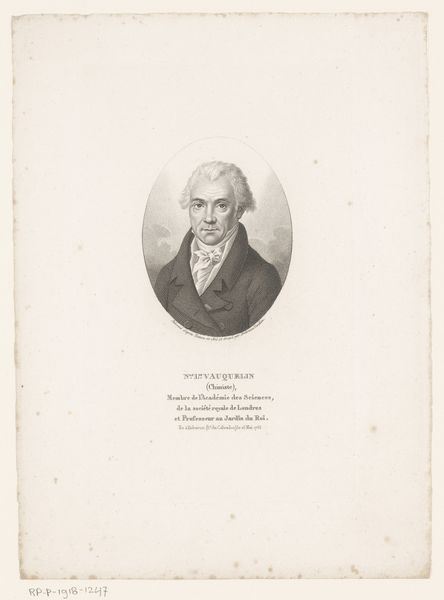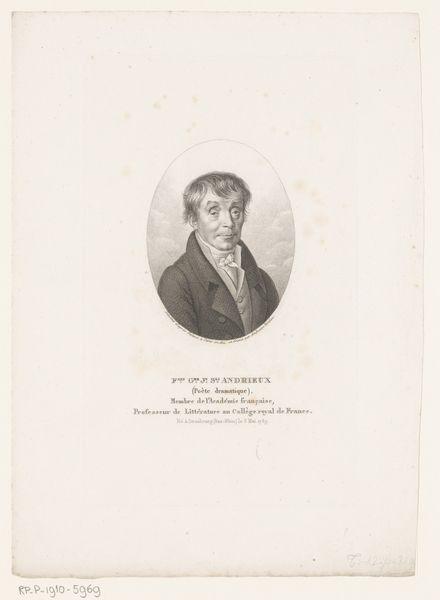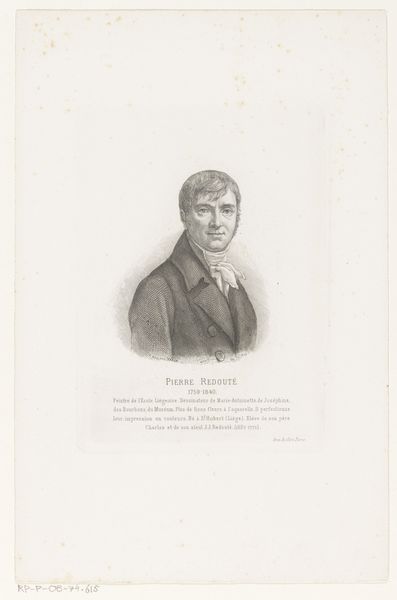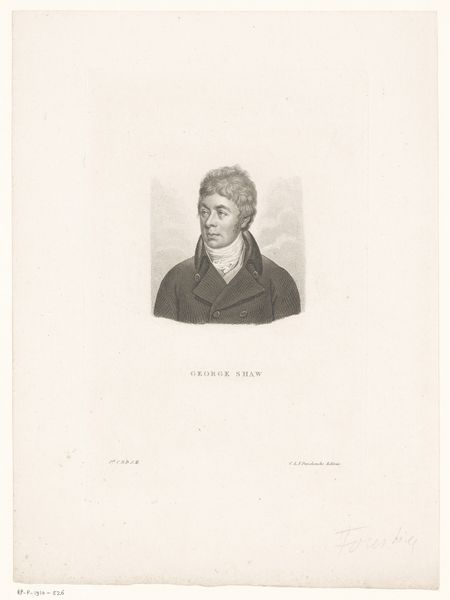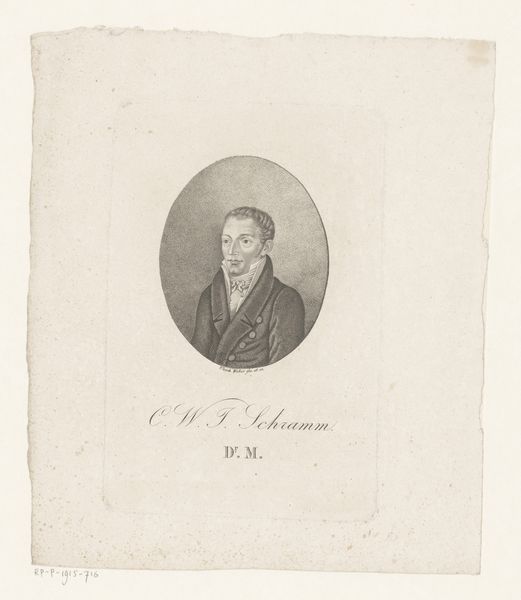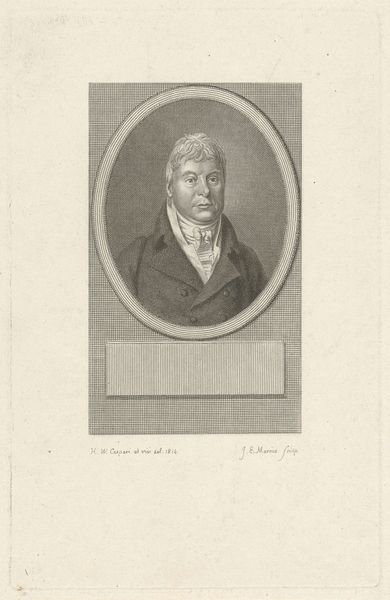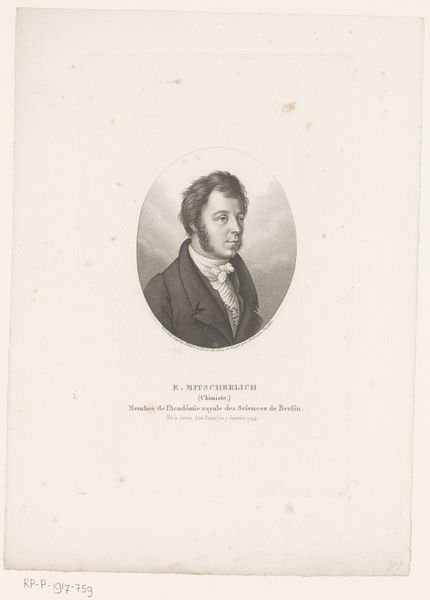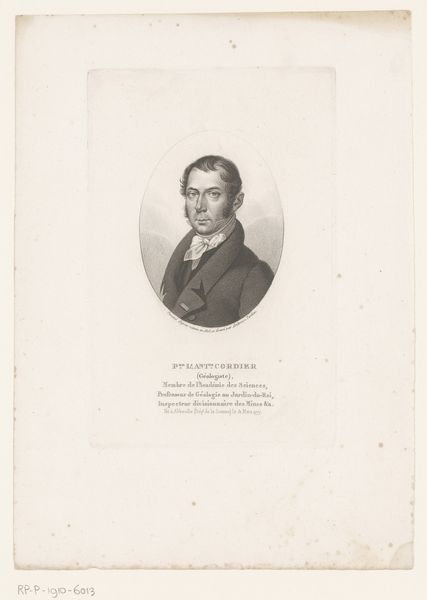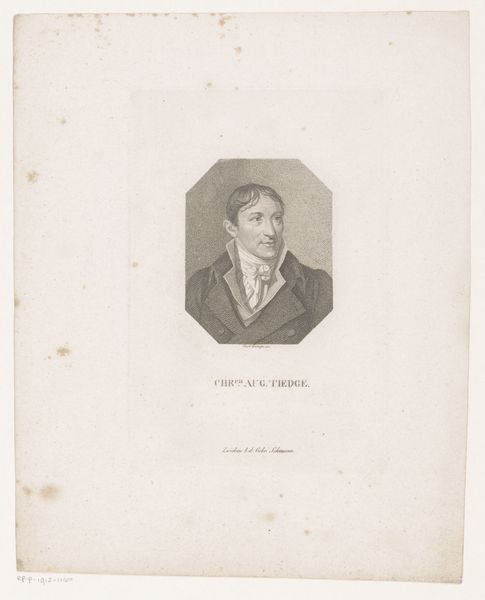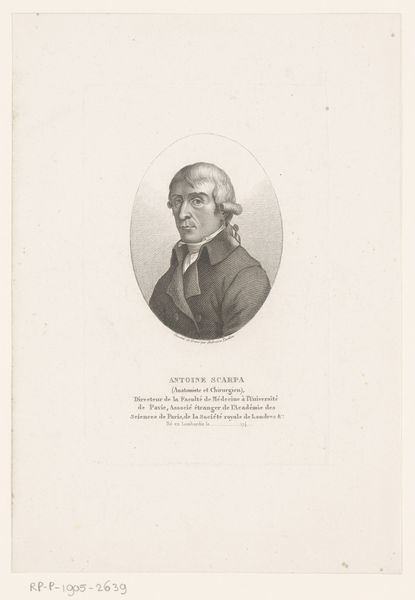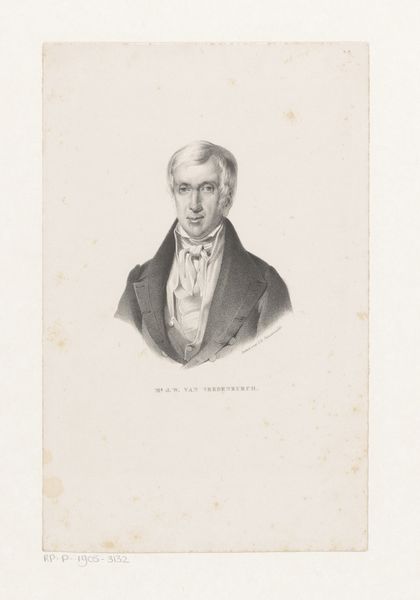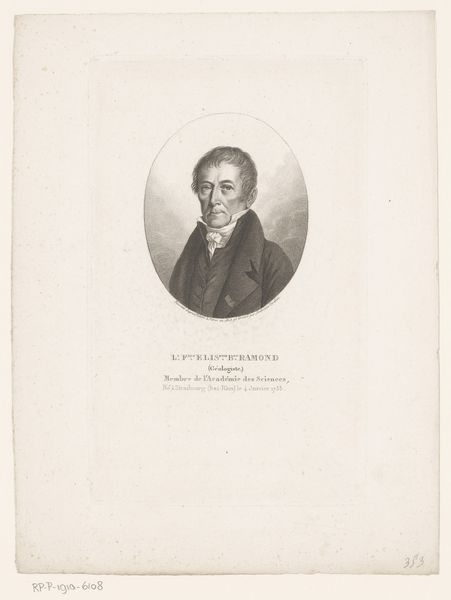
print, engraving
#
portrait
#
neoclacissism
# print
#
old engraving style
#
classical-realism
#
academic-art
#
engraving
Dimensions: height 215 mm, width 143 mm
Copyright: Rijks Museum: Open Domain
Curator: Ah, here we have Ambroise Tardieu's 1826 engraving, a "Portret van Anselme Gaëtan Desmarest." It's a rather striking piece, wouldn't you agree? Editor: Immediately, I’m struck by the contrast. The soft, almost romantic rendering of Desmarest’s face clashes with the stark, academic formality implied by the medium. It feels like a personality trying to break free from the rigid confines of societal expectation. Curator: I can see that. Tardieu really captures a certain tension in Desmarest's expression. Perhaps it's reflective of the period. Neoclassicism was reigning supreme, yet there was this undercurrent of burgeoning Romanticism. The pull between intellect and emotion, reason and… well, the wildness within. Editor: Exactly! And let’s remember Desmarest himself, labeled "Zoologiste" right beneath his name, implying an intimate engagement with the natural world. Here is this intellectual, no doubt shaped by enlightenment thinking and new scientific discoveries, being literally *imprinted* with the techniques of Neoclassical portraiture—a fascinating conflict of image and essence. What was the context of these images and who did they speak to? Curator: Most likely, prints such as these would circulate among the academic community, spreading ideas and the image of notable figures. It makes me think about how such portraits function, essentially encoding authority, scientific rigor and I guess a kind of Enlightenment "ideal." The clean lines, the meticulous detail, they all reinforce the idea of rational observation and ordered knowledge. And that stark formality seems intended to establish the credibility and importance of the subject and of science in general. Don't you think? Editor: Yes. And look at that font – an early form of sans-serif that's rather daring, and somewhat undermines any idea of Neoclassical aesthetic unity. We might view the piece as an assertion of a growing power for men of science over traditional aristocratic representations of the past, despite how 'classical' it appears. The print offers an image in the throes of self-fashioning, caught between what once was and what is soon to become. Curator: You know, I initially saw it as just a straightforward portrait, a product of its time. But considering it through that lens of transition—that really enriches it. Thanks, as ever! Editor: My pleasure! There is more than meets the eye with images and the figures we hold as culturally important and exemplary!
Comments
No comments
Be the first to comment and join the conversation on the ultimate creative platform.
